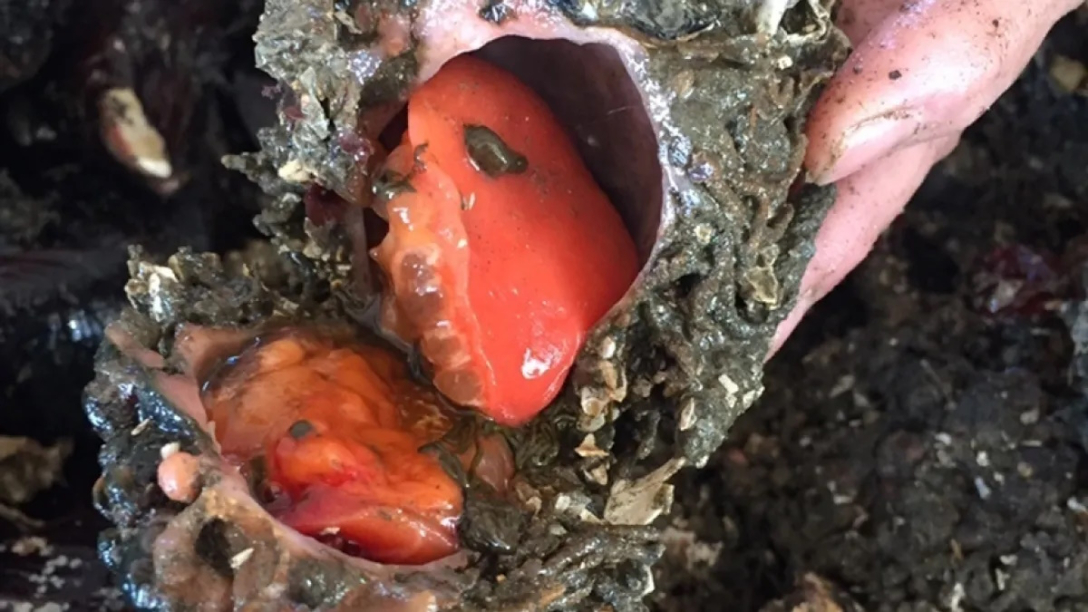Along the coasts of Chile and Peru, there are "bleeding stones" scattered about. What are they? (photos)
Strolling along the shores of Chile and Peru, you might come across a "living stone" that appears to be bleeding. This peculiar organism is scientifically known as Pyura chilensis. At first glance, it may seem reminiscent of a sea urchin, but to many, it resembles a mass of organs trapped within a rock, as noted by IFLScience.
In reality, this is not a stone at all, but a filter feeder related to ascidians. Such a discovery may seem quite bizarre, yet locals even consume these "living stones." The edible part is the red section, which is concealed within the dark exoskeletal structure that resembles a rock.
It is important to note that the dark exoskeletal structure is characteristic of the subclass and is known as the tunic of tunicates (Tunicata). It serves as a resilient home that can house thousands of individuals, essentially living together in one "rock." These organisms lack a brain and sensory organs and are quite unassuming neighbors residing in the intertidal zones along the coast of Peru and Chile, where they are actively utilized in local cuisine.
Due to the red hue of their soft tissues, people often perceive these "living stones" as bleeding; however, the blood of the pyura is even more peculiar. Scientists have found that the blood of these creatures is not red at all, but transparent and filled with an element known as vanadium—a silvery-white metal. Researchers from the Center for Biological Diversity have also discovered that pyura can contain vanadium levels up to 10 million times greater than that of the surrounding seawater.

For decades, scientists have sought to understand how and why filter feeders accumulate vanadium in such large quantities, given that the metal is toxic to most other animals even in relatively small doses. However, this question remains unanswered. It is also unclear whether consuming pyura may have significant health implications for humans.
Equally intriguing is that this element possesses quite interesting chemical properties, thus holding potential as a carrier for future energy sources. As a result, this species of filter feeders is of particular interest to chemists around the globe.
P. chilensis is also known for its reproductive behavior. Born as males, they become hermaphrodites upon reaching "sexual maturity," equipping them with all the necessary tools for reproduction with other members of their species. However, if they find themselves in a difficult situation, they can actually reproduce independently through self-fertilization. Furthermore, scientists have also discovered that self-fertilized offspring are likely to be just as successful as those produced by two parents.